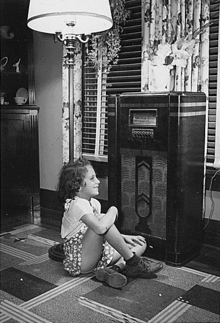The first radio news program was broadcast August 31, 1920 by station 8MK in Detroit, Michigan, which survives today as all-news format station WWJ under ownership of the CBS network. The first college radio station began broadcasting on October 14, 1920, from Union College, Schenectady, New York under the personal call letters of Wendell King, an African-American student at the school.[12] That month 2ADD, later renamed WRUC in 1947, aired what is believed to be the first public entertainment broadcast in the United States, a series of Thursday night concerts initially heard within a 100-mile (160 km) radius and later for a 1,000-mile (1,600 km) radius. In November 1920, it aired the first broadcast of a sporting event.[12][13] At 9 pm on August 27, 1920, Sociedad Radio Argentina aired a live performance of Richard Wagner's Parsifal opera from the Coliseo Theater in downtown Buenos Aires. Only about twenty homes in the city had receivers to tune in this radio program. Meanwhile, regular entertainment broadcasts commenced in 1922 from the Marconi Research Centre at Writtle, England.
Sports broadcasting began at this time as well, including the first broadcast college football game.[14]
One of the first developments in the early 20th century was that aircraft used commercial AM radio stations for navigation. This continued until the early 1960s when VOR systems became widespread.[15] In the early 1930s, single sideband andfrequency modulation were invented by amateur radio operators. By the end of the decade, they were established commercial modes. Radio was used to transmit pictures visible as television as early as the 1920s. Commercial television transmissions started in North America and Europe in the 1940s.
In 1954, the Regency company introduced a pocket transistor radio, the TR-1, powered by a "standard 22.5 V Battery". In 1955, the newly formed Sony company introduced its first transistorized radio.[16] It was small enough to fit in a vest pocket, and able to be powered by a small battery. It was durable, because it had no vacuum tubes to burn out. Over the next 20 years, transistors replaced tubes almost completely except for very high-power transmitter uses. By 1963, color television was being regularly broadcast commercially (though not all broadcasts or programs were in color), and the first (radio) communication satellite, Telstar, was launched. In the late 1960s, the U.S. long-distance telephone network began to convert to a digital network, employing digital radios for many of its links. In the 1970s, LORAN became the premier radio navigation system. Soon, the U.S. Navy experimented with satellite navigation, culminating in the invention and launch of the GPS constellation in 1987. In the early 1990s, amateur radioexperimenters began to use personal computers with audio cards to process radio signals. In 1994, the U.S. Army and DARPA launched an aggressive, successful project to construct asoftware-defined radio that can be programmed to be virtually any radio by changing its software program. Digital transmissions began to be applied to broadcasting in the late 1990s.


No comments:
Post a Comment